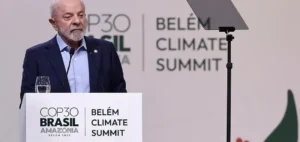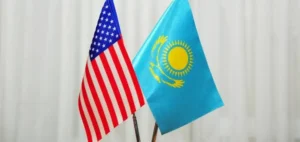Oil and gas revenues from the Russian Federation amounted to approximately RUB520bn ($6.45bn) in November, marking a decline of nearly 35% compared to the previous year. This drop follows a prolonged downward trend in hydrocarbon income, driven by sustained pressure on Russian crude prices and a stronger rouble, both of which directly impact fiscal returns.
Declining prices and an unfavourable exchange rate
During the first eleven months of the year, the average price of Russian crude stood around $57/bbl, compared to over $68 during the same period last year. At the same time, the rouble appreciated, with an average rate of approximately RUB81/USD versus around RUB92 the previous year. This currency shift reduces the rouble value of dollar-denominated exports, thereby narrowing the taxable base. Russia’s fiscal structure, which includes tax brackets indexed to oil prices, amplifies this downward movement.
Rosneft and Lukoil at the centre of new US sanctions
The sanctions imposed in October by the US Office of Foreign Assets Control (OFAC) on Rosneft and Lukoil target entities representing about half of Russian oil production. By focusing on the companies themselves rather than maritime or logistical services, the measures create legal risks for international buyers and financial partners. Some general licences still allow limited operations, but confirm Washington’s intent to restrict Kremlin access to foreign currency revenues.
Budgetary impact and internal financing constraints
The federal deficit reached RUB3.8tn over the first nine months of the year, as cumulative oil and gas revenues significantly underperformed against initial projections. With defence spending accounting for approximately 32% of the federal budget, the government has little room to cut other expenditures. Use of the National Wealth Fund is increasing, although repeated withdrawals weaken its ability to support the economy over the medium term without sufficient replenishment.
Reconfigured oil flows and logistical pressures
In response to Western restrictions, Russia has intensified efforts to redirect cargoes to Asian markets, especially India, by offering steep discounts. This strategy has heightened logistical pressure, with an increased risk of maritime congestion and temporary offshore storage. At the same time, Middle Eastern producers and US exporters are securing long-term contracts with buyers seeking to reduce exposure to sanction-related risks.
Budget contribution becomes core to geopolitical contest
While Russian export volumes remain stable, their net contribution to the federal budget is now the central lever in the ongoing economic confrontation. The persistent discount between Urals and Brent reflects the cumulative impact of the G7 price cap and targeted sanctions on major Russian companies. This mechanism reduces per-barrel income, shifting the conflict towards a slow erosion of Moscow’s fiscal capacity.






















